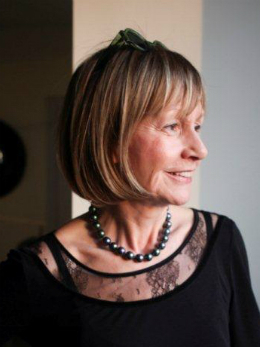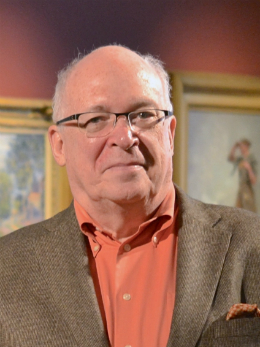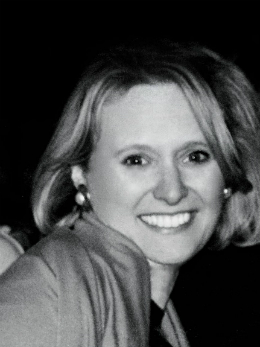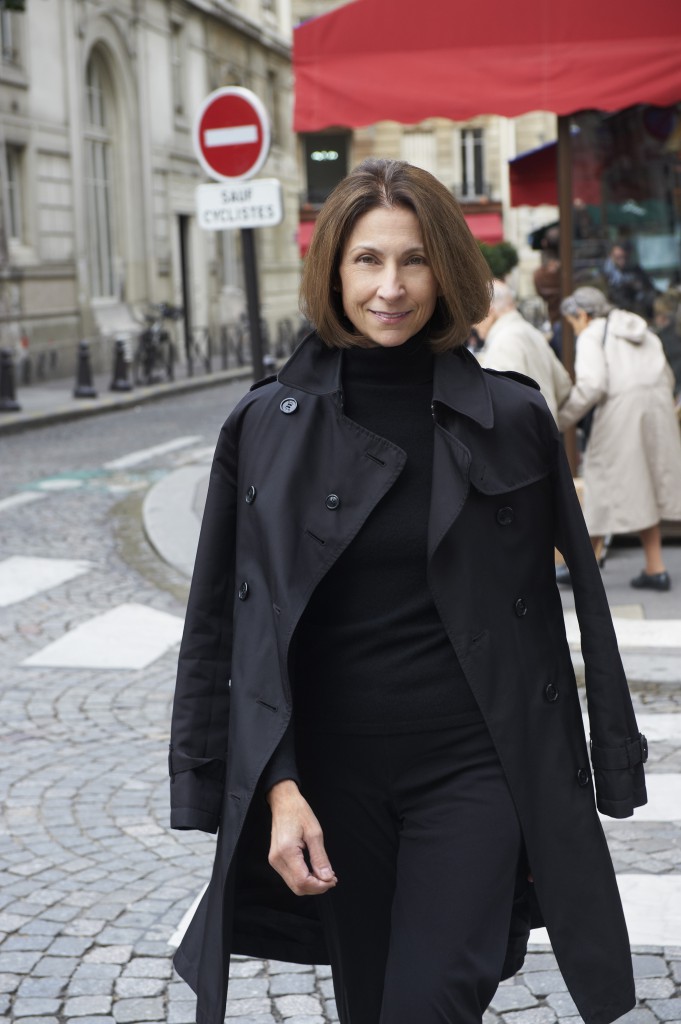Editor’s Letter
Storytellers, Travelers, Global Citizens: Take us with you
Your quest is to dig below the surface, peek behind the façade, where lurks a story, rumor, recipe or fossil. “Why is now the right time?” We often ask during interviews, inquiring about artistic projects, literary works, and personal expeditions. As much as this question is being framed for the person being interviewed on A Woman’s Paris, we ask this, too, of ourselves as travelers and storytellers. We have an eagerness to explore fresh ideas, to forge powerful relationships and build a community. Readers, we invite you to draw close this narrative, woven on A Woman’s Paris, a narrative that has come to life, to discover secrets of the past and take part in shaping the future.
We, like many historians and novelists, are always looking for hints that there is something under the “official” stories, the personal memories. “I had to learn to read very carefully and to listen even more carefully,” said Ronald C. Rosbottom in our interview with him about his book When Paris Went Dark. “More than anything, I wanted to be fair to all those concerned, even the Germans, so that the story I told would be believable.”
Here at A Woman’s Paris, we take hold in conversations unlike anything we could have ever imagined in this setting of storytellers, of travelers, who beckon us to see behind the veil. We revel in this narrative, at times whimsical, at some times poignant, across generations, languages, and hemispheres. Like Mireille Guiliano and David Lebovitz, experiencing a shift in the culinary culture of France, and Tilar J. Mazzeo and Ronald C. Rosbottom, uncovering an incredible history in France, I, too, marvel at what lies beneath the surface of ordinary tourism.
 Why is now the right time to publish MEET PARIS OYSTER: A Love Affair with the Perfect Food? We asked Mireille Guiliano, author of the #1 New York Times bestseller French Women Don’t Get Fat: The Secret of Eating for Pleasure, as well as French Women Don’t Get Facelifts.
Why is now the right time to publish MEET PARIS OYSTER: A Love Affair with the Perfect Food? We asked Mireille Guiliano, author of the #1 New York Times bestseller French Women Don’t Get Fat: The Secret of Eating for Pleasure, as well as French Women Don’t Get Facelifts.
“Like in French Women Don’t Get Fat! I wanted to write about it as I found few books on the subject and also felt the people in the oyster and wine business deserve to be talked about because their passion and hard work is often an afterthought yet without them we would be deprived of one of the greatest pleasures,” Mireille said in our November interview. “My stories have inspired readers in so many ways from eating differently, to learning how to cook, to leaving the job they dislike to moving to Paris for a year to live their dream, and even letting go of relationships that they felt not worth pursuing.”
Why is this message significant, especially today? We wanted to know. “Next is doing more for and with women because I feel lately women have been regressing,” said Mireille. “If we want to change the world, and I believe we will, we need to be more giving, more forgiving, more involved, more committed, show more solidarity, compassion and empathy and stop wasting time on small and mean stuff (you know the snarky stuff on the Internet). We can do it if we set ourselves to the task.” Book excerpt: Mirielle Guiliaino’s “Meet Paris Oyster” on the Parisians’ love for theme (excerpt) published on A Woman’s Paris®; including Mireille’s recipe for Oyster Vichyssoise. (Photo: Tim Knox)
 We wanted to ask Ronald C. Rosbottom, professor of French and European Studies at Amherst College and Winifred L. Arms Professor in the Arts and Humanities, how he forges an unforgettable history of both the important and minor challenges of day-to-day life under Nazi occupation, and of the myriad forms of resistance that took shape during that period.
We wanted to ask Ronald C. Rosbottom, professor of French and European Studies at Amherst College and Winifred L. Arms Professor in the Arts and Humanities, how he forges an unforgettable history of both the important and minor challenges of day-to-day life under Nazi occupation, and of the myriad forms of resistance that took shape during that period.
In Ronald C. Rosbottom’s interview about his book WHEN PARIS WENT DARK: The City of Light Under German Occupation 1940-1944, which weaves a rich tapestry of daily life in a city that looked the same but had lost much of its panache, he tells us: “I didn’t want to write a bureaucratic or military or even a social history of the period. I wanted to bring forth what I have called a “tactile” history, that is, one that would give some sense of how it felt to walk, work, raise a family, and love in a city whose built environment changed very little, but whose aura was starkly cracked.”
We wanted to know more. Were there lessons learned? “Almost every daily action demanded some sort of ethical decision, from the occupier and the occupied, about interaction with others,” he said. “How does one discover these moments, isolate them, and then narrate them? That was my challenge.” Book excerpt: When Paris Went Dark: The City of Light Under German Occupation 1940-1944 published on A Woman’s Paris®. (Photo: Kane Haffey)
 Were you on a quest to remaster the last great French dishes and lesser-known fare before they disappeared forever? we asked David Lebovitz, former professional cook and baker at Chez Panisse [Alice Waters’ acclaimed restaurant], and author of six cookbooks, including a New York Times bestseller called The Sweet Life in Paris. In David Lebovitz’s interview about his last book MY PARIS KITCHEN: Recipes and Stories, he shares how the culinary culture of France has shifted as a new generation of chefs and home cooks—most notably in Paris—incorporates ingredients and techniques from around the world into traditional French dishes. “Since most of those great French dishes don’t really need to be remastered, I didn’t really do much to them,” he said.
Were you on a quest to remaster the last great French dishes and lesser-known fare before they disappeared forever? we asked David Lebovitz, former professional cook and baker at Chez Panisse [Alice Waters’ acclaimed restaurant], and author of six cookbooks, including a New York Times bestseller called The Sweet Life in Paris. In David Lebovitz’s interview about his last book MY PARIS KITCHEN: Recipes and Stories, he shares how the culinary culture of France has shifted as a new generation of chefs and home cooks—most notably in Paris—incorporates ingredients and techniques from around the world into traditional French dishes. “Since most of those great French dishes don’t really need to be remastered, I didn’t really do much to them,” he said.
What is your approach? We wanted to know. “I did, however, aim to make them more accessible to people who don’t live in France, who can’t easily get things like duck confit (so I made a “counterfeit” version, which doesn’t require 10 quarts of duck fat), I took the mystery out of cassoulet, letting people know that it’s a peasant dish, and therefore not necessary to buy $30 worth of dried beans to make it.” David’s latest book My Paris Kitchen presents 100 sweet and savory recipes that reflect the way modern Parisians eat today and draw us in with a Parisian culinary history that inspires good cooking with scrumptious results. Book excerpt: My Paris Kitchen: Recipes and Stories published on A Woman’s Paris®; including David’s recipe for Salted Butter Caramel Chocolate Mousse. (Photo: Ed Anderson)
 THE HOTEL ON PLACE VENDÔME: Life, Death, and Betrayal at the Hôtel Ritz in Paris by Tilar J. Mazzeo—cultural historian, biographer, and author of the New York Times bestseller The Widow Clicquot, The Secret of Chanel No. 5, and Clara C. Piper Associate Professor of English at Colby College—challenged many of our readers with a story of the Hôtel Ritz, which has stood for over a century in the heart of Paris as a world-renowned symbol of opulence and modernity; a riveting account that spans from 1898 to the present day.
THE HOTEL ON PLACE VENDÔME: Life, Death, and Betrayal at the Hôtel Ritz in Paris by Tilar J. Mazzeo—cultural historian, biographer, and author of the New York Times bestseller The Widow Clicquot, The Secret of Chanel No. 5, and Clara C. Piper Associate Professor of English at Colby College—challenged many of our readers with a story of the Hôtel Ritz, which has stood for over a century in the heart of Paris as a world-renowned symbol of opulence and modernity; a riveting account that spans from 1898 to the present day.
In our interview with Tilar J. Mazzeo, she states: “In many ways, what it means to fit into a society or a social circle is how the Ritz began for those who were drawn to it in 1898. It might not have been the Ritz, of course. It could have been some other space. But in the end, for reasons of chance in some cases, the Ritz became long before the 1920s the place in Paris where the vision of “modernity” in France and in the French arts and culture came together for a group of people who went on to become famous. Later, after the war, that story continued and the hotel was always the place where you went if you wanted to be part of everything that was ‘ritzy.’”
Were you ever warned that you should not attempt to tell this story of the Hôtel Ritz in Paris during the Occupation? We asked. “At one stage in my research, I was fortunate enough to speak with an elderly French woman whose husband had been senior in the resistance,” she said. “I tell the story of that encounter in the prologue to the book, and she had warned me that trying to tell the history of what happened in Paris during the occupation would be incredibly difficult, in part because people had such powerful reasons for misremembering or forgetting.” Tilar became fascinated by the story of the Ritz in Paris while researching her earlier book The Secret of Chanel No. 5. Coco Chanel, of course, spent the Second World War living in the Ritz with her German boyfriend. At one point Tilar discovered in some files an incredible history of espionage at the hotel and decided to tell the story of what happened there. Book excerpt: The Hotel on Place Vendôme: Life, Death, Betrayal at the Hôtel Ritz in Paris published on A Woman’s Paris®. (Photo: Sarah Rose)
Become a part of our conversation. We celebrate the art and ideas of people from every place and every heritage.
Free Subscription: Join our thousands of followers to receive your copy of our Readers’ Choice: 253 Books About France, including books about Architecture, Interiors and Gardens; Arts; Biography; Children; Culture; Fashion; Food and Wine; Memoir; Mystery; Novel; Science; Travel; and War, along with e-mail notifications of new posts on the website.
We welcome your Submissions and comments.
Now in our fifth year, a commitment to publishing compelling interviews and stories for our readers continues at AWomansParis.com. Visit us on Facebook. Follow us on Twitter. Share us with friends.
Here’s to a great year of reading!
Barbara Redmond
Publisher, A Woman’s Paris®
barbara@awomansparis.com



